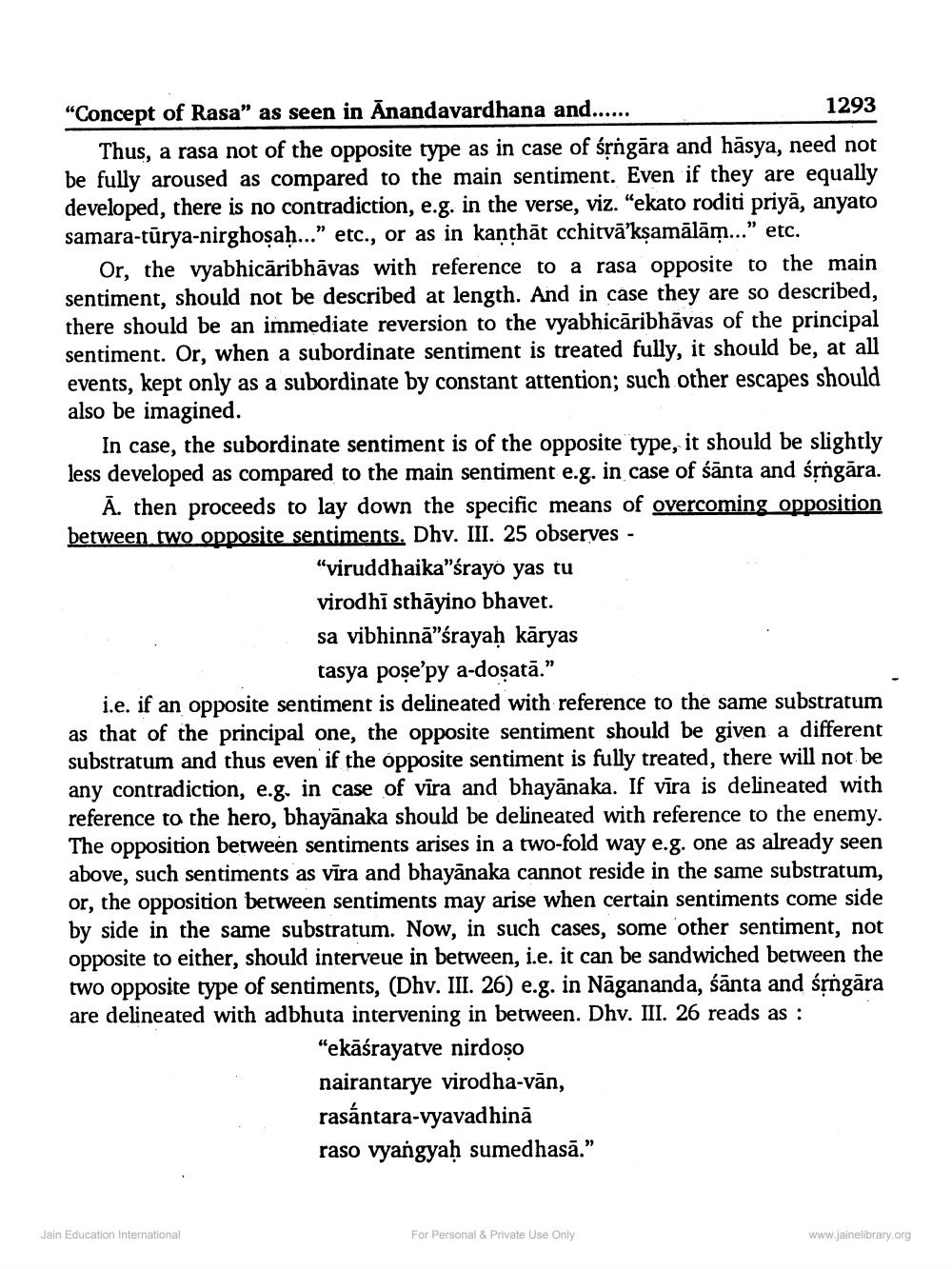________________
"Concept of Rasa" as seen in Anandavardhana and......
1293
Thus, a rasa not of the opposite type as in case of śṛngāra and hasya, need not be fully aroused as compared to the main sentiment. Even if they are equally developed, there is no contradiction, e.g. in the verse, viz. "ekato roditi priya, anyato samara-turya-nirghoṣaḥ..." etc., or as in kaṇṭhāt cchitvā'kṣamālām..." etc.
Or, the vyabhicāribhāvas with reference to a rasa opposite to the main sentiment, should not be described at length. And in case they are so described, there should be an immediate reversion to the vyabhicāribhāvas of the principal sentiment. Or, when a subordinate sentiment is treated fully, it should be, at all events, kept only as a subordinate by constant attention; such other escapes should also be imagined.
In case, the subordinate sentiment is of the opposite type, it should be slightly less developed as compared to the main sentiment e.g. in case of santa and śṛngāra.
A. then proceeds to lay down the specific means of overcoming opposition between two opposite sentiments. Dhv. III. 25 observes -
"viruddhaika"śrayo yas tu virodhi sthāyino bhavet. sa vibhinna"śrayaḥ kāryas tasya pose'py a-doṣatā."
i.e. if an opposite sentiment is delineated with reference to the same substratum as that of the principal one, the opposite sentiment should be given a different substratum and thus even if the opposite sentiment is fully treated, there will not be any contradiction, e.g. in case of vira and bhayānaka. If vīra is delineated with reference to the hero, bhayānaka should be delineated with reference to the enemy. The opposition between sentiments arises in a two-fold way e.g. one as already seen above, such sentiments as vīra and bhayanaka cannot reside in the same substratum, or, the opposition between sentiments may arise when certain sentiments come side by side in the same substratum. Now, in such cases, some other sentiment, not opposite to either, should interveue in between, i.e. it can be sandwiched between the two opposite type of sentiments, (Dhv. III. 26) e.g. in Nāgananda, santa and śṛngāra are delineated with adbhuta intervening in between. Dhv. III. 26 reads as :
"ekāśrayatve nirdoso nairantarye virodha-vān, rasántara-vyavad hinā
raso vyangyaḥ sumedhasā."
Jain Education International
For Personal & Private Use Only
www.jainelibrary.org




